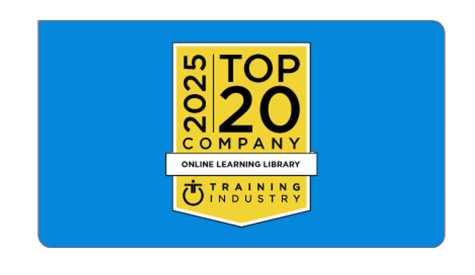Tips to Improve the RFP Process for Employee Training Partners

We frequently receive invitations to participate in the RFP process for employee training partners and eLearning services. It’s good to provide some structure around the search process so you can compare potential vendors. But many times we wish we had been involved earlier in the process to help the potential client ask the right questions so they find the best solution for their needs. After all, our goal is to provide solutions, not necessarily to sell our services.
The inspiration for this blog comes from the corporate procurement departments who write these RFPs as if they are sourcing office supplies, not a program that has the ability to reduce turnover, prevent lawsuits, prevent workplace accidents, improve sales results, improve customer service scores and improve productivity. Some of these RFPs assume that each vendor that provides a response is nothing more than a commodity; identical in their offerings and only separated by their pricing.
In many cases, the procurement team’s goal “to obtain the best value for the money spent” equates to the cheapest option. You can easily compare pricing for paperclips and staples and look for the lowest price but these products truly are commodities, and pricing may very well be the only differentiator. For non-commodities, like eLearning solutions, you still should consider the quality of the products, the level of service from the vendor, and any other value-added offers. If you are going to ignore those considerations and treat eLearning solutions as a commodity, you have to ask, “Why go through the RFP process if the price is the only factor?”
Let’s assume you did your homework, and you realize eLearning solutions carry multiple differentiating factors, and you need to build an RFP. There are many best-practice RFP templates out there you can use. Our goal here is to help you think through some of the components specifically related to employee training and eLearning services.
Situation Analysis
Before you write your RFP, take the time to evaluate your current state. We have a helpful blog post “Evaluating Your Corporate Training Strategy” and supporting eBook “7 Critical Questions for Evaluating Your Learning Strategy.” This includes understanding your learning culture, your audience, desired core competencies and learning paths, and metrics. For the sake of this blog post, we will assume you have completed that groundwork, you have determined that a change is needed, and an RFP is indeed necessary.
Define Stakeholders
Who will be asked to review the RFP and hear the presentations? Who will have a vote at the end of the RFP process? Get their needs and pain points upfront. Take the time to interview them and document their requests. These might include:
- Director of L&D or Talent Development is likely leading this project and highly invested in all aspects.
- Director of Human Resources may also be leading the project and have a checklist of compliance training topics.
- LMS or Technology Administrator will have questions regarding ease of use, implementation, integration, file storage, etc.
- Safety Director will have goals related to reducing and eliminating safety incidents with safety training.
- IT Director may be concerned with cybersecurity, network security, file transfers, etc.
- CFO may be concerned with the costs related to the entire project.
Define Your Needs
When writing an RFP for employee training partners and eLearning services, it’s important to document your requirements. It’s tough to compare suppliers and their offering in an “apples to apples” method if you don’t know which kind of apples you want.
- Content Topics. Define your “must-have” courses. Those that are deal-breakers if a vendor doesn’t offer will help you narrow down your potential vendor list. Check out our most popular blog “How to Buy eLearning Content for Your LMS” for more helpful details.
- Human Resources may require compliance training topics such as anti-harassment, discrimination, FMLA, workplace violence, etc.
- Warehouse and maintenance managers may require safety training topics like forklift safety, ladder safety, and slips, trips, and falls.
- Sales leaders may be looking for training on how to handle objections, cold-calling, and DISC selling skills.
- Satellite offices in California, Connecticut, Delaware, Illinois, Maine, New York City and State will want to satisfy their state-specific anti-harassment training requirements.
- Note that some specialized niche topics may require you to source content from multiple providers.
- Technology Features. Again define your “must-have” features and those you may consider in the future. Don’t be distracted by the “something shiny” and pay for functionality you never intend to use. Tie the features to the benefit and the problem you are trying to solve.
- What features do they currently offer?
- What enhancements are planned for the future?
- Will there be additional fees as new features are rolled out?
- Support Requirements. Many companies charge additional fees for implementation and tiered support levels throughout the duration of the contract.
- How long does the typical implementation process take? Days, weeks, months?
- Will you receive personalized training by a learning consultant or account manager?
- Is there also a self-service, online help center with videos and PDFs?
- Who do you report issues to? Bug fixes and glitches?
- What is their response time?
- Will anyone help your admins find the content they need?
- Will the vendor commit to helping you achieve your training goals and provide a level of service that will support that?
- Bonus Elements. This is the area where your vendors can differentiate themselves with unique offerings you may not have considered earlier in the RFP process.
- Do they offer custom content production services?
- Do they provide a client marketing tool kit with emails and flyers to help you promote content to your learners and drive learning engagement?
- Have they won any industry awards?
- Do they have existing clients willing to talk to you as a reference?
- Do they have case studies with results?
Narrow the Field
The section above discusses the deal-breakers or must-haves for your solution. Why waste time (your’s and the vendor’s) reviewing the specifics of a vendor that can not provide a must-have feature? You won’t be choosing their solution as long as that must-have feature is missing from their solution, right?
Prior to sending out your RFP, I recommend presenting each vendor with a simpler RFI, or Request For Information. This questionnaire would merely ask each vendor to address your list of must-have features ONLY. Only those vendors that can deliver your must-haves will be invited to respond to your RFP. Word of caution: Never assume what any vendor can or cannot offer, even when you used the vendor’s website or other information to base your assumption, and especially if you base your assumption on the claims of another vendor. Use the RFI or RFP responses for your source.
Now, if there are no vendors that have all of your must-haves, you will need to remove the least important must-have from your list until at least one vendor qualifies.
Create a Score Sheet
If you’ve done your homework, this should be an easy step in the RFP process and give you a fair and reliable method to compare vendors. Define the scoring criteria for:
Content:
- Be sure to check out our blog post on “How to Compare Corporate Training Videos” for more tips.
- Score the topic lists to make sure your “must-haves” are included and the “nice to have” topics are helpful and relevant.
- Which videos do you like better? Which ones did you actually enjoy watching?
- How often is content updated?
- How often is new content released?
- How old is most of the content?
Technology
- Features and functionality
- Ease of use
- Use our handy checklist in our blog “Buying an LMS: The Complete Feature Checklist.”
Support
- Implementation
- Ongoing support
- Learn more about HSI's approach to client service in our blog “What is a Learning Consultant?”
Bonus Elements
- This may be a freestyle area and be different for each vendor.
- Results from client references.
- Pricing/Value
- Have your stakeholders give their opinion as to the cost compared to the learner experience and the expected results.
- Will the cheapest option achieve your goals?
- How do they reflect on your brand experience and employee experience?
Rank and Weigh
Have each of your stakeholders rank each criteria according to its importance, and then apply weights to combine with your scoring. For example, if one vendor offers a social learning technology as part of their platform but you don't plan to offer that functionality to your learners, you might rank that as not important even though they receive a high score for that criteria.
Our hope is that with a little extra time upfront planning and thinking about the full experience, your RFP process will run smoother and you will find the best option for your employee training needs.
Additional Resources
- Learn why the actual cost of a training solution isn't the only thing you should consider when purchasing content in our blog "How to Compare Employee Training Pricing."
- A useful guide to help you make the right choice when you buy eLearning, "How to Buy eLearning Content for Your LMS (And Not Regret It Later)."
- It can be overwhelming comparing training providers, so our blog "How to Compare Corporate Training Videos" can help you spot the differences from one content provider to the next.
- If you're shopping for a new LMS, use this handy checklist to make sure it has the features and support you need. View the checklist in our blog "Buying an LMS: The Complete Feature Checklist."


